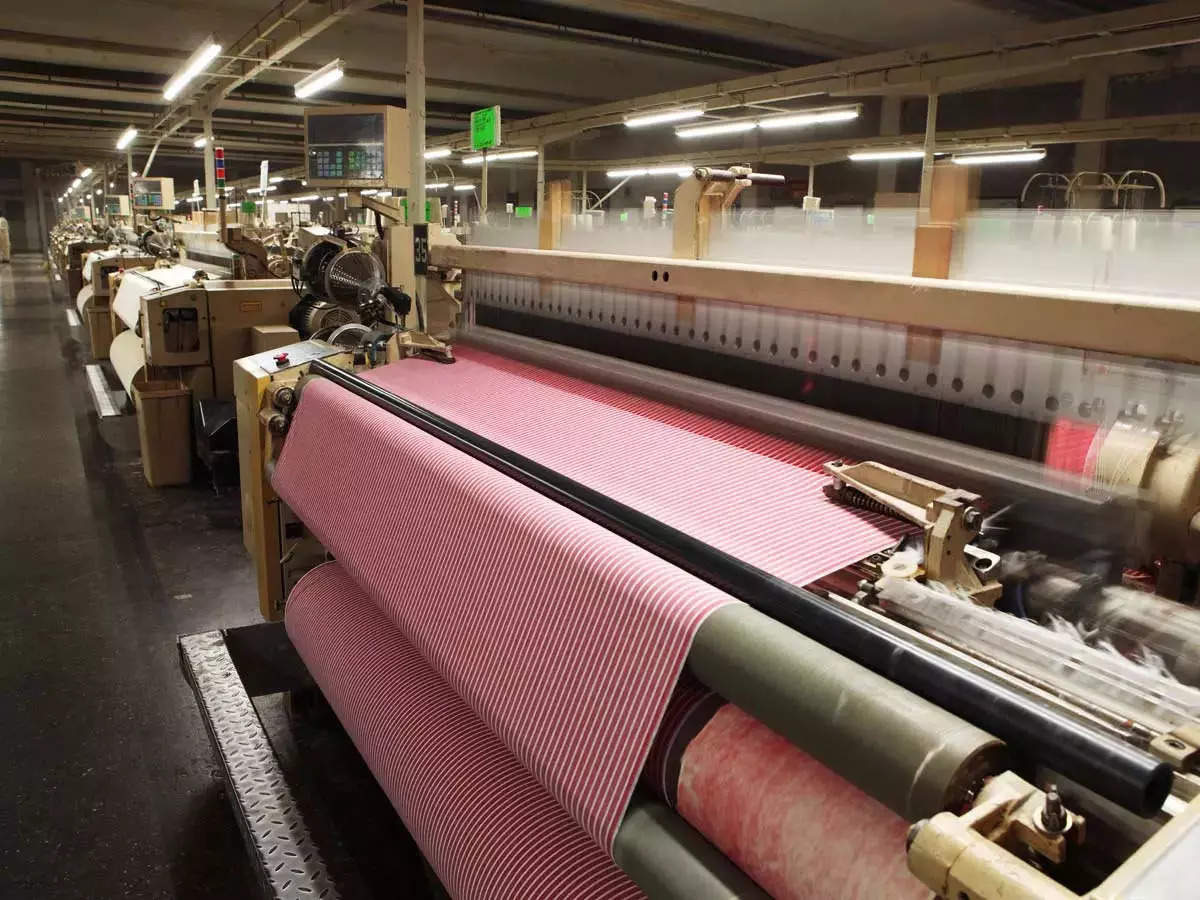How hard will the changes hit textile & handloom industry?, Retail News, ET Retail
 On the tips of the GST Council, the Central Board of Indirect Taxes and Customs (CBIC) introduced that the GST charge on garments, textiles, and footwear would be elevated from 5% to 12% with influence from January 1, 2022. The textile and handloom industries are now suffering from the outcomes of the Covid pandemic, and any proposal to raise the tax would be a demise knell for the field. All textiles and clothing will develop into extra costly as a end result of the proposed GST hike on the textile business. The tax committee is predicted to contemplate boosting India’s merchandise and companies tax (GST) costs in get to receive an supplemental $3 trillion in revenue per year.
On the tips of the GST Council, the Central Board of Indirect Taxes and Customs (CBIC) introduced that the GST charge on garments, textiles, and footwear would be elevated from 5% to 12% with influence from January 1, 2022. The textile and handloom industries are now suffering from the outcomes of the Covid pandemic, and any proposal to raise the tax would be a demise knell for the field. All textiles and clothing will develop into extra costly as a end result of the proposed GST hike on the textile business. The tax committee is predicted to contemplate boosting India’s merchandise and companies tax (GST) costs in get to receive an supplemental $3 trillion in revenue per year.Government’s outlook
Owing to climbing paying out requires and the economic affect of the 2nd wave of the Covid-19 pandemic in the initially half of the current fiscal 12 months, both of those the federal and point out governments are under profits problems. This tax raise will assist the Centre, which is enduring a profits shortage as a outcome of the latest fuel obligation cuts, by stabilising tax revenues and releasing up resources for welfare initiatives. It will also spare states from a fiscal cliff when the central government’s GST compensation finishes in June of up coming yr. The Centre wishes to right the inverted duty framework since the GST on male manufactured fibre is 18%.The feasible influence
- This would have an affect on 85 % of the sector and around 80% of remaining merchandise.
- Above 15 lakh work opportunities in primary and ancillary models would be shed as a consequence of the prepared GST boost.
- Due to the fact the unorganized sector accounts for in excess of 80% of fabric creation in the country, elevating the GST on materials to 12% will harm energy loom and handloom weavers.
- Because of to amazing value will increase in raw products like yarn, packing components, and freight, the industry is possible to working experience a 15-20% rate increase in clothes in the in the vicinity of future. The traders lament the reality that folks who purchase outfits for fewer than Rs 1,000 will be the most afflicted.
- Fabric traders claimed trading exercise has been hampered for the previous two many years by the Covid-19 pandemic, but is progressively strengthening owing to a lower in new ailments in recent weeks. They experienced great hopes coming with the yr 2022 ,but the exact same was shattered with the previously mentioned announcement.
- Just one of the most usually talked about difficulties in the group is the high inflation, charges of greens and FMCG necessary merchandise that people today get, and now if GST charges are elevated on the attire and footwear sectors, it will even more pressure family budgets.
- The incremental revenue may possibly also be constrained for the reason that lots of compact businesses that had been in the casual sector prior to GST may revert to their previous status. ? The imposition of significant taxes has previously designed an ambiance of uncertainty not only for shoppers but also for manufacturers.
The Reactions
- Attire producers look for a hold off in the implementation of the GST boost on hosiery objects
- The Hosiery Manufacturers’ Association has expressed worry about the Centre & notification on Increased Goods and Solutions Tax (GST) Rates to be levied on several apparel things commencing January 1, 2022, as it will influence the popular man and people in the micro, tiny, and medium enterprises (MSME) sector.
- Clothes was an vital commodity, but people ended up suffering from money hardship as a outcome of the 5% GST, so traders have been requesting a reduction in GST for a number of decades.
Motives for Deferment
- Significant maximize in garment prices, as cotton costs have risen by 70% in the previous calendar year.
- An additional enhance would result in a sizeable drop in intake or a shift to much less expensive and decrease-quality goods.
- The Centre will have to withdraw the proposed boost in GST on natural fibers.
- The maximize in GST will have a considerable influence on the textile industry in Andhra Pradesh.
- Textile trade and industry are surprised by the government’s selection to raise textile taxes, in spite of the actuality that textiles are the second-biggest income-creating commodity after agriculture. The cloth traders have started protests in opposition to the GST raise and intend to escalate the agitation.
- According to the fabric traders, the existing 5% GST levy on purchasers is Rs 1,500 crore, which will be improved to Rs 3,600 crore if the 5% GST is improved to 12%. They claimed that an more burden of almost Rs 2,100 crore would be imposed on men and women in New Yr 2022 as a consequence of an boost in GST.
- Transportation charges have risen appreciably as a result of larger gasoline and diesel price ranges, and the GST maximize will be disastrous for textiles, handlooms, and readymade clothes.
- If the Union federal government does not reverse the amplified GST, many textile federations have planned to intensify their protests and agitations.
- About 60% of citizens and opposition occasion leaders criticized the GST maximize on clothing, textiles, and footwear as “absolutely unjustifiable.”
Far more suffering for the close-consumer
The notification by the Centre of greater GST costs for numerous textile and clothing objects commencing in January 2022 has appear as a blow to micro, modest, and medium-scale textile and garments models, with field teams professing that the shift will raise client prices and gasoline inflation. Fixing the charge at 12% for fabrics and clothes in an sector wherever almost 80% of the units are in the MSME section will only direct to greater rates for the typical buyer.
Cotton is the mainstay of India’s textile marketplace. In accordance to the Cotton Company of India, India is the world’s greatest cotton producer, accounting for close to 22% of world cotton generation (CCI). Exporters argue that the authorities need to not have intervened in the cotton value chain since it is the key uncooked substance utilised in a selection of other industries.
Cotton is greatly made use of in the household furnishing textile sector. Commencing January 1, 2022, the cotton textile market will be needed to spend improved GST @ of 12% on their products, while earlier, we were required to spend GST @ 5%. Since the cotton textile sector is currently burdened by a 70% increase in raw content price ranges and a nearly 500% boost in sea freight, we have no option but to shift the web burden of the increased 7% GST to the close-buyer.
Conclusion
There is a potent perception that a considerably much more beneficial and reasonable alternative will not only take care of the inverted duty composition anomaly but also give a fillip to the marketplace. The industry and that country counsel that imposing a 5% price on the overall value chain would be a significantly much more beneficial and sensible remedy.
(Ruchika Bhagat is the controlling director (MD) of Neeraj Bhagat & Co. an ISO 9001: 2008 UKAS qualified business, launched in 1997. Ruchika graduated in 1996, a member of the Institute of Chartered Accountants of India (ICAI) considering that 1998. She specializes in Business Advisory, Tax, Regulatory and Chance Advisory. She is a strategic adviser in location up firms in India for international corporations and taking treatment of its compliances.)









